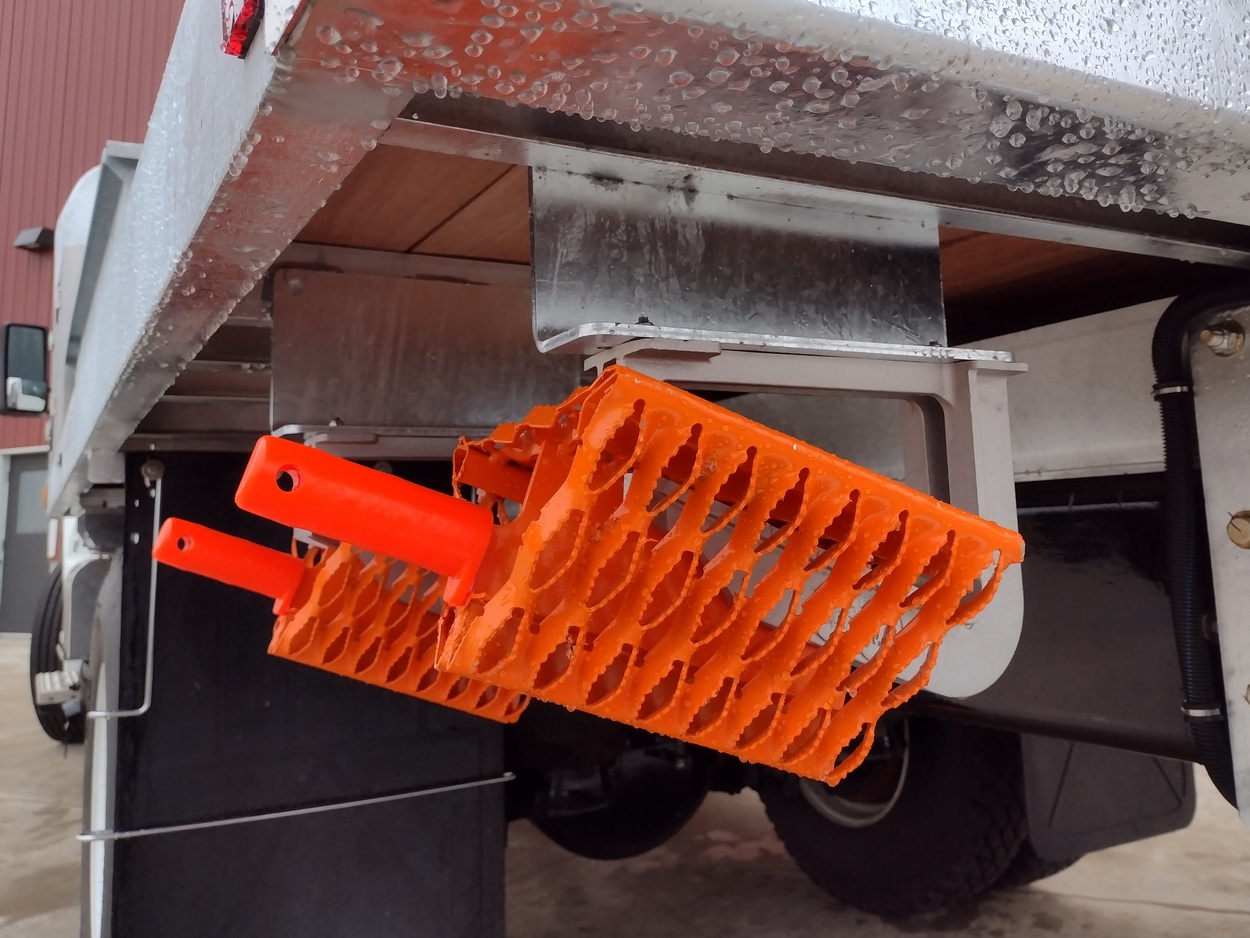All Weather Wheel Chocks are rated at the capacities shown below to help when specifying your equipment. If you have questions or would like place an order, contact us today.
Wheel Chock ratings are based on the recommended practice of placing two chocks at each non-steering axle, one set on both the right and left side of the vehicle, blocking the tire in the direction of the incline. Note that the U.S. Department of Transportation provides that the maximum single-axle weight limit on Federal highways is 20,000 lbs. The tandem-axle limit is 34,000 lbs. in combination, with some exceptions up to 40,000 lbs. at very wide axle spreads. Some states may allow higher weights due to “grandfather” rights. Learn more about bridge and axle weights on the DOT web site.
| Item Number | Finish/Material | Dimensions - W x D x H Plus 4 1/2"L Handle | Axle Capacity (lbs.) | Weight (lbs.) |
|---|---|---|---|---|
| 8500 | Galvanized Steel | 10 3/4" x 9" x 5 1/16" | 30,000 | 9.5 |
| 8500-FO | Galvanized Steel w/ Fluorescent Orange Powdercoat | 10 3/4" x 9" x 5 1/16" | 30,000 | 9.5 |
| 8500-AG | Aluminum w/ Grip Plate Base & Fluorescent Orange Powdercoat | 10 3/4" x 9" x 5" | 30,000 | 4.9 |
| 8500-NY | Galvanized Steel | 9 11/16" x 5 5/8" | 30,000 | 9.1 |
| 8500-NYFO | Galvanized Steel w/ Fluorescent Orange Powdercoat | 9 11/16" x 5 5/8" | 30,000 | 9.3 |
| 8500-PWFO | Galvanized Steel w/ Fluorescent Orange Powdercoat | 8 1/4" x 8" x 4 13/16" | 12,500 | 6.1 |
| 8505 Vertical Holder | Almag Casting Fits all Chocks Except 8500-AG | 3" x 12" x 3 3/4 | n/a | 2.8 |
| 8505-B Underbody Holder | Almag Casting Fits all Chocks Except 8500-AG | 3" x 11" x 6 3/4" | n/a | 3.0 |
| 8501 Vertical Holder | Galvanized Steel Fits 8500 & 8500-AG | 13 1/4" x 9" x 3.5" | n/a | 3.0 |

